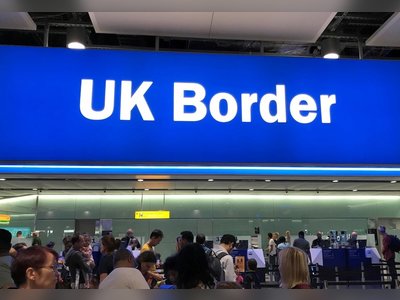
UK Government Welcomes Sharp Drop in Net Migration but Signals More Action Ahead
Net migration falls to 204,000 in the year to June 2025 — lowest since 2021 — as ministers say further reforms are required
The United Kingdom has recorded a steep fall in net migration, with official data showing the figure dropping to 204,000 in the year to June 2025—almost two-thirds lower than the previous year and the lowest level since 2021. Ministers described the numbers as a significant milestone in efforts to ease pressure on housing, infrastructure and public services.
The sharp decline stems from a major reduction in non-European migration for work and study following stricter visa rules, including higher salary thresholds, limits on student dependants and reforms to care-worker visas.
At the same time, emigration has increased, with more British and European citizens leaving the country than arriving.
Home Secretary Shabana Mahmood welcomed the figures as evidence that the government’s immigration strategy is working, while emphasising that further steps will be taken to manage arrivals and address ongoing challenges, particularly small-boat crossings.
Analysts note that while the fall brings migration closer to pre-pandemic levels, it remains higher than long-term historical averages and raises questions about future labour supply in critical sectors such as healthcare, logistics and agriculture.
Business groups warn that significant workforce shortages could worsen if migration continues to tighten.
The government has indicated that additional reforms to visa and asylum processes are being prepared.
While the latest figures offer political reassurance to ministers seeking more sustainable migration levels, the broader debate over how to balance economic needs with public-service capacity is expected to remain central in the months ahead.
The sharp decline stems from a major reduction in non-European migration for work and study following stricter visa rules, including higher salary thresholds, limits on student dependants and reforms to care-worker visas.
At the same time, emigration has increased, with more British and European citizens leaving the country than arriving.
Home Secretary Shabana Mahmood welcomed the figures as evidence that the government’s immigration strategy is working, while emphasising that further steps will be taken to manage arrivals and address ongoing challenges, particularly small-boat crossings.
Analysts note that while the fall brings migration closer to pre-pandemic levels, it remains higher than long-term historical averages and raises questions about future labour supply in critical sectors such as healthcare, logistics and agriculture.
Business groups warn that significant workforce shortages could worsen if migration continues to tighten.
The government has indicated that additional reforms to visa and asylum processes are being prepared.
While the latest figures offer political reassurance to ministers seeking more sustainable migration levels, the broader debate over how to balance economic needs with public-service capacity is expected to remain central in the months ahead.









